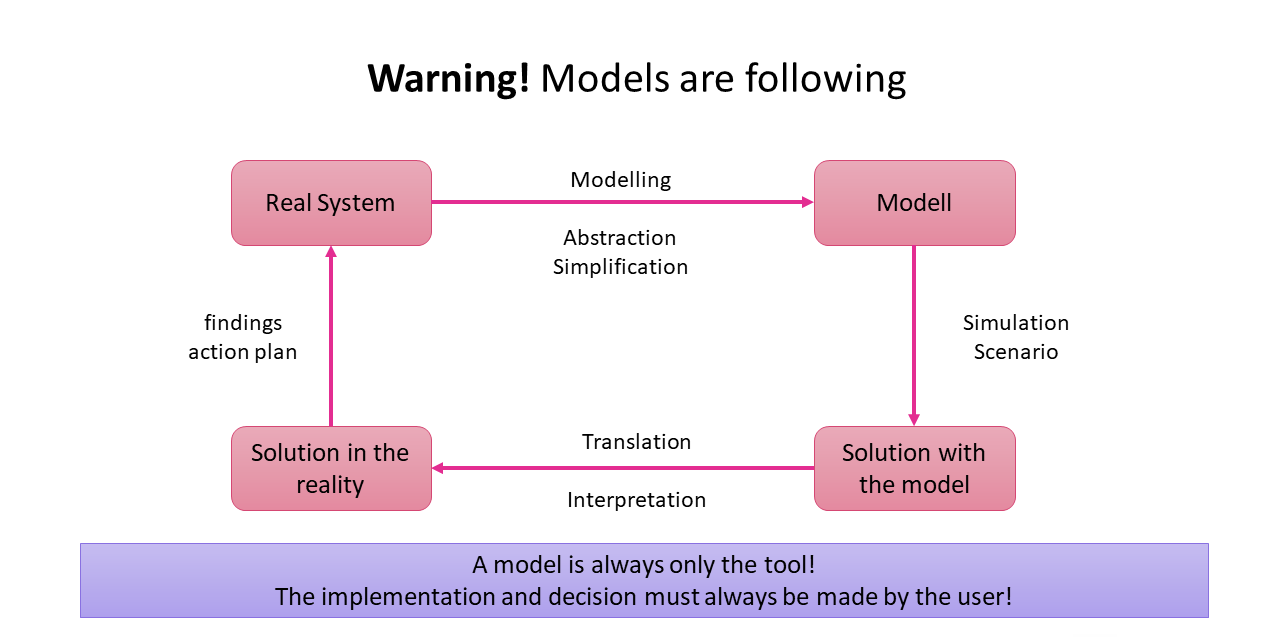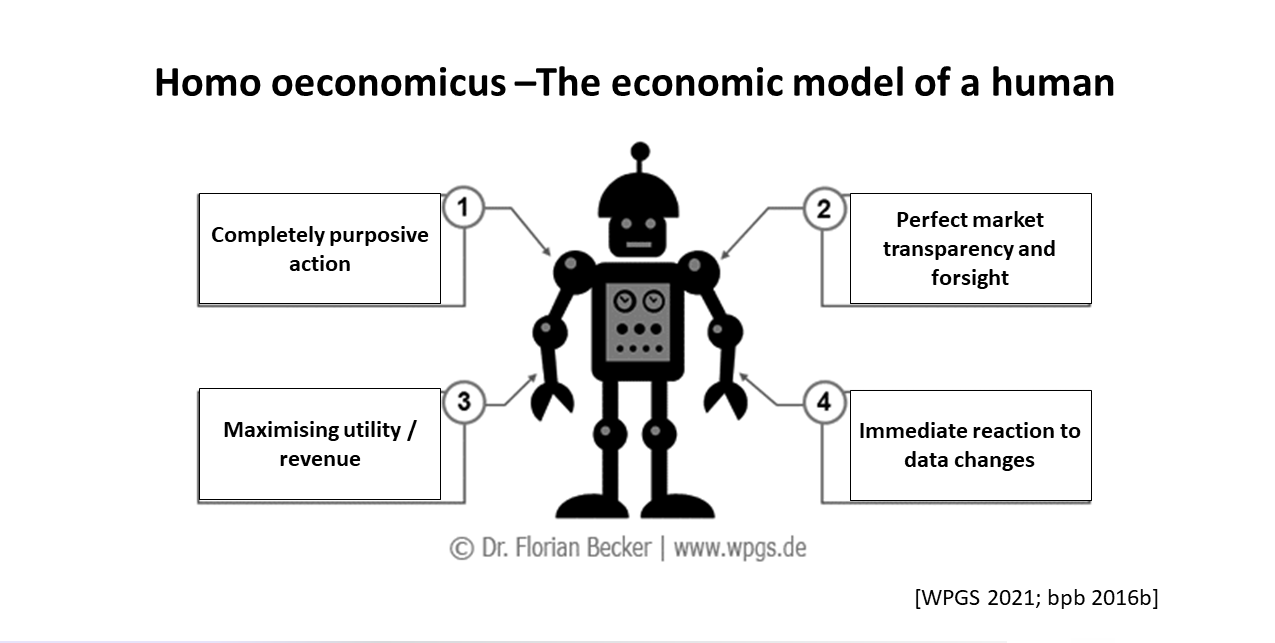Lecture 2 - Economics and Financing of Waste Management
| Website: | Hamburg Open Online University |
| Kurs: | Wastiepedia |
| Buch: | Lecture 2 - Economics and Financing of Waste Management |
| Gedruckt von: | Gast |
| Datum: | Mittwoch, 26. November 2025, 14:51 |
Inhaltsverzeichnis
- 1. Economics and Financing of Waste Management
- 1.1. Part I - Economic Theory - About Theories, Models and the Reality
- 1.2. Basic Economic Models
- 1.3. What is the objective of economy and how can we measure it's success?
- 1.4. Economics and Enviornment - Can Circular Economy become a Synergy?
- 1.5. Economic Theories - Conclusion
- 1.6. Part II - Financing Waste Managment - Costs and Capital
- 1.7. Financing Options
1. Economics and Financing of Waste Management
As the terms waste MANAGEMENT and Circular ECONOMY already imply, handling waste is connected with many fields of the economics. How do we finance the logistics, treatment, monitoring and recycling? How are recycling products marketed? What is the best route of the waste truck in order to operate in the most cost-efficient way? How is the personal organised? How should we handle the limited resources of planet Earth in order to also use them in future? What guidance is needed from the government in order for this to work? Or can self-organisation take place?
Before we can dive deeper into more waste managment related topics, we first have to explain what can be understood under "Economy" and how economy and environment connect to each other.
This is a very theoretical site of economics. While creativity and innovative business ideas are important for a business all this has to happen within the boundaries set by the political and legal system which is influencing the macro economics. The economic system was afterall developed by humans and thus is inluenced by changes made to the rules applied. Similar how you would change your strategy in a game if a new rule is introduced.
When it comes to financing methods for waste managment systems, one approach is extremly promising and currently highly discussed: the Extended Producer Responsibilty (EPR). Therefore, it will be given it's own chapter which you can jump to immediately when you are familiar with economic theories and traditional financing schemes for waste managment. Otherwise or if you are interested in how the topic was approached here, please keep on reading.
1.1. Part I - Economic Theory - About Theories, Models and the Reality
First of all there is something we should be aware of when talking about models:
Whenever we are working wth theories - in the natural sciences and humanity sciences alike - we have to be aware that we are using models to help us understand complex systems which are hard to wrap your head around if not simplified and looked at single units as well as a whole system.
However, models will only ever be afterimages of the reality and hence require the user to interpret and question the results of the model.
Especially since what is understood as the reality is different for every human. While the reality described by models in natural science is hard to argue it as it can be proven, what every human understands to be juste influences their own personal understanding of good and bad.

Let's for example look at the model often used in economic theory to describe a human being: the homo oeconomicus. A being described by four distint character trades (see figure below).
The homo oeconomicus is a being that strives for maximasing is utility. As a consumer he/she tries to get as many services and products as possbile while the goal of a producer is to maximse the revenue from selling products and services.
For this to happen in the most economically optimal way the homo oeconomicus has to know everything about all goods and markets (where is the product sold the cheapest?). There also exist a full understanding how these prices will change in future and any change made to the status quo will immediatley be updated and reacted to. Furthermore the homo oeconomicus will do anything in order to achieve his/her goal of maximising his/her utility.

As a human yourself, you know that this approximation of human behaviour does not always hold true. You are no robot, so you act on your emotions and your compassion for others will not allow you to maximise your revenues under all circumstances.
What does this mean for the model of the homo oeconomicus? - The model is good enough to make predictions to behaviour in economics; even if these should never been seen as ultimate thruths but rather outcomes with a very high likelyhood.The decision will be made by a human who also has to question if the results of the model are sensible.
For economic theories taking the homo oeconomicus as a premise it will also entail that their conclusion what will be "the best option for everyone" will be the option with the largest total revenue (regardless of its distribution). However in real life the happiness of human kind is not only decided by the number of goods and services and hence people might not become happy when applying a solution which was built up on the premise that they themselves are a "homo oeconomicus". Hence the further input made by the applyer of the model are crucial. Alone a different understanding of the word "utility" can make a difference.
A fitting TED talk to this topic was given by Nick Hanauer:
The dirty secret of capitalism - and a new way forward
1.2. Basic Economic Models
The slides in the presentation below show a few basic economic models that are good to know and which are explained in teaching videos on other websites and in textbooks. Some recommendations for learning material was added to the links if you are not familar with the figures and concepts on the slides.
1.3. What is the objective of economy and how can we measure it's success?
In the German Law on the stability of the econmic development, four factors were decided upon that would ensure economic growth and thus the livelihood of the citizens.
However, this follows the model which single outs economy from its nested position in the environment (environmental and anthropogenic alike) and describes the constant flows of In- and Outputs from businesses and households.
The modern Economist Kate Raworth showed the limits of this model and introduces her Donught model as a closer approximation of reality. Listen to her TED-Talk for an explanation of the models shown in the slides.
1.4. Economics and Enviornment - Can Circular Economy become a Synergy?
When we look at the relationship between Economics and Environment, the theory of the Tragedy of the Commons of Garret Hardin cannot be left unmentioned. After all, Elinor Ostrom who came up with a solution of governing the commons won the Nobel Memorial Prize in Economics for it in 2009.
In order to understand what the Tragedy of the Commons is we have to first understand the different theories of how a good can be defined according to its rivality and excludability. Look at the slides below and also don't miss out on the videos linked to it.
1.5. Economic Theories - Conclusion
- In traditional Waste Management no good of value is produced but a service to remove waste from the living area to ensure the health of the citizens.
- In classical economics the business model wins that can offer this service at the lowest price.
- Ecological sound waste management costs more and there is little incentive for individuals to pay a higher price as the common good „environment“ could be mistreated by others despite the personal investments (Tradgedy of the commons)
- Common goods have to be protected using regulations and monitoring which are unwelcomed in a free market economy.
- Waste management has to be supported by the state as the economic incentive to invest is little.
BUT:
- Curently the world economy is changing as ecological and social issues are becoming more and more important (transformation from the magial square to the magial hexagon or even pentagon).
- Ressource depletion is increasing the interest of companies in valuable waste fraction and recycling.
=> Unattrative waste fractions still have to be covered by state funding
Interested in learning how laws can influence waste managment? - Look at our lectures for…
1.6. Part II - Financing Waste Managment - Costs and Capital
The price of something is the sum of several different costs. In order to manage a business, these costs have to be analysed; which is why it is useful to classify the costs into different types of costs. The slides below summarise a few types of costs. For example there are fixed and variable costs. Fixed costs have to be payed no matter how much waste you want to treat and variable cost increase per unit; in other words: if you have less waste you also have to pay less.
Before you look at the slides, why don't you try to write down some types of costs you already know and compare them with the slides later?
Also, when you start a business you have to invest a lot of money up-front, before receiving revenues. Saving and using only your money is very unrealistic as you need a business first before you have a job in order to earn the money. Hence, it is common praxis for large projects to borrow money from a bank or a different creditor and come up with a pay-back sheme taking into account when your revenus will start coming in and inflation. Make sure you look at the slide on equity and borrow capital!
1.7. Financing Options
According to the Prevent Waste Alliance (2020), there are five finaning options in Waste Management.
Like mentioned in the beginning, EPR will be eloborated on in its own chapter. But before you jump right into it, try doing the quiz below to revise what you just learned.
This project “German MENA University Network for Waste Management and Circular Economy”, implemented by the University Rostock (UR), Hamburg University of Technology (TUHH) and University of Technology Dresden (TUD), Jordan University of Science and Technology (JUST), Constantine university 3 Algeria, Ain Shams University Egypt and Cadi Ayyad University Morocco is funded by the PREVENT Waste Alliance, an initiative of the German Federal Ministry for Economic Cooperation and Development (BMZ). The contents of the Wastepedia course are the sole responsibility of German-MENA University Network and do not necessarily reflect the positions of all PREVENT Waste Alliance members or official policy positions of the governments involved. More information: https://prevent-waste.net/en/.
We, the one responsible for the content of the Wastepedia Lecture, tried to uphold the copyright law. If you find a case of copyright infringement, please contact the HOOU support so unrightfully used content can be taken down. As we had no intention of using material of a third party without permission, please hold of from any legal action to give us time to correct possible mistakes made.